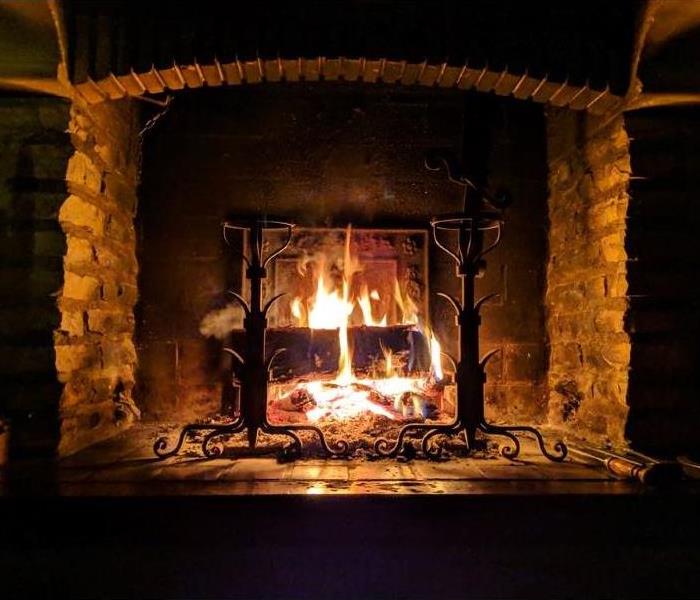Wood Burning Fireplace Safety in your Gurnee, IL Home
2/26/2021 (Permalink)
 Wood burning fireplaces can help keep your home warm and create ambiance, but safety is of the utmost importance.
Wood burning fireplaces can help keep your home warm and create ambiance, but safety is of the utmost importance.
Fireplaces can make a home feel warm, cozy, and inviting as well as aid in heating your home. Follow some of these simple safety tips to ensure your fireplace does not become a safety hazard.
Keep the damper closed when not using the fireplace
Be sure the damper closes tightly when the fireplace is dormant. If you plan on replacing the damper, consider investing in one that closes at the top of the chimney, as this type tends to offer more reliable moisture seal to the elements outside than those that close at the base of the flue.
Build a better fire
First, always make sure your damper moves freely and is open before starting a fire. When laying the firewood, use dry, cured hardwoods like oak, elm or maple. These will burn cleaner and longer than softwoods like pine, spruce and cedar. Some experts recommend that you hold a lit twisted piece of newspaper in the chimney to get warm air rising before lighting the kindling in your fire. Remember — never use liquid fire starters indoors.
Manufactured logs and kindling are also an option
Not only are they convenient, but they emit lower rates of pollutants, according to the Environmental Protection Agency (EPA). Because they burn very hot, they should only be used one at a time.
Inspect the structure and flue
If it’s been awhile since your chimney sweep stopped by, do a quick walk around yourself, looking for structural integrity both inside and out of the fireplace. Be sure the mortar and bricks are in good shape.
Check the flue. You should be able to see daylight when you look up your flue. If not, there may be combustible material at the top, like a bird’s nest or leaves. Have the sweep inspect the issue.
Reduce creosote build-up
Creosote is that tar-like, flaky stuff that can lead to chimney fires. One of the easiest ways to reduce this buildup is to avoid green or wet wood. Also, building smaller fires can help since they produce less smoke, and in turn, less creosote. Manufactured chimney “sweeping” logs that have chemicals in them to reduce certain types of creosote can help. Just remember that none of these replace the need for an annual chimney cleaning.
Use your fireplace tools
Standard fireplace tools consist of a poker, tongs, a broom and shovel. You may want to add a dust scoop and a good pair of gloves to your collection. These tools are there for your protection, but they only help you if they’re used consistently and correctly.
Practice smart hearth habits
Use a spark screen on top of the fireplace to keep burning embers from escaping up the chimney and a grate or glass doors on the front to keep sparks inside the wood box. A non-flammable rug adds even more protection for your floor.
Check your smoke detectors and fire extinguishers
Regularly checking your smoke and carbon monoxide detectors is important. Why not tie that check into your first fire of the season maintenance routine?
Keep fire extinguishers handy. Be sure to have a few fully charged, annually-inspected fire extinguishers nearby and in plain sight. Store them near doorways leading into the area with the fireplace. Also, keep one near the fireplace itself, taking care to locate it in an area that will stay cool.
By keeping these fireplace safety tips top of mind, you’re ready to fire up your fireplace and make warm, cozy memories all winter long. If the unexpected happens, and you do experience damage in your home from excess smoke, soot, or fire, SERVPRO of Gurnee is here to help.


 24/7 Emergency Service
24/7 Emergency Service